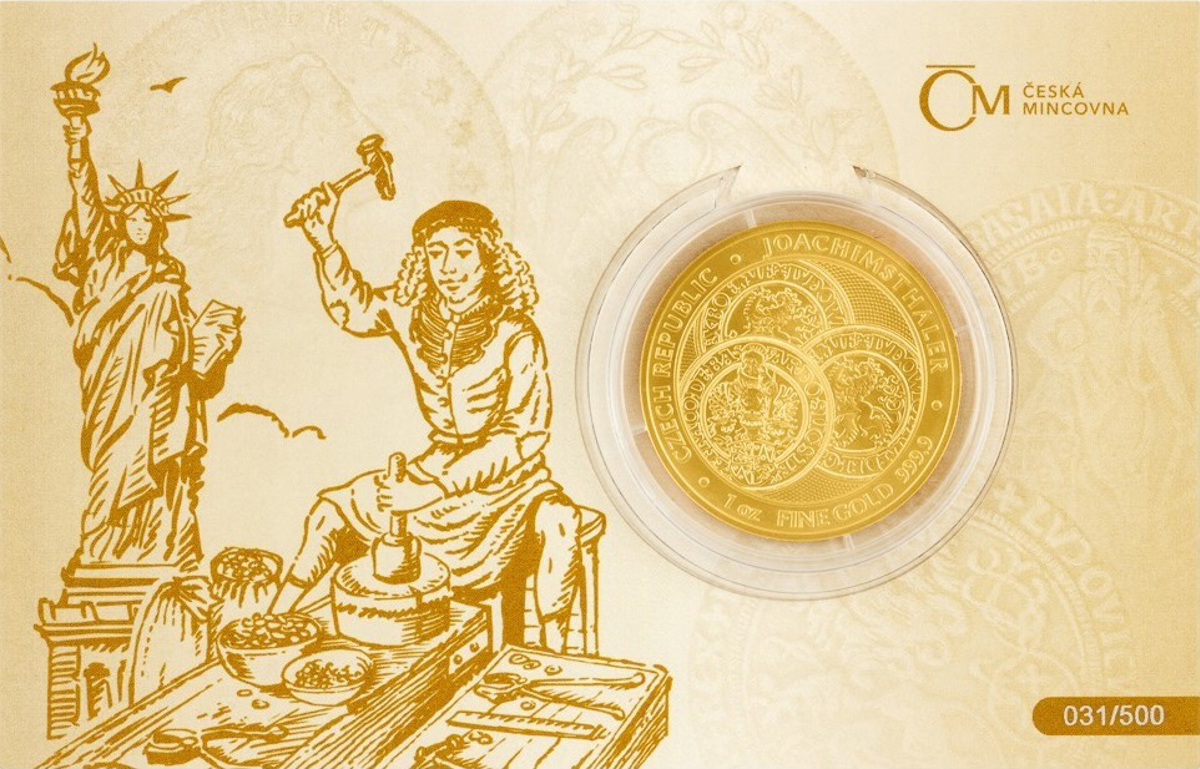The Czech Republic gave the world a dollar. Its ancestors are the famous Jáchymov thalers

Thanks to their quality, our original coins became the first to be traded in bulk. Who would have thought that in a small country like ours, a name for a currency used all over the planet would emerge. Of course, when we say the word dollar, we all automatically think of the most widely used one: the American dollar. But strangely enough, its history goes back to us.
Let's try to summarize: The US dollar is the most widely used currency in international financial transactions. It is the most widely used currency in international markets, and you will find it abbreviated as USD. Many countries have held US dollars since World War II in so-called bank reserves, either with gold or on their own; more than 60 percent of the world's financial reserves are held in dollars.
Don't overlook: Would you rather invest in gold or silver?
World currency
Of course, the US dollar has already crossed the borders of the United States. More than 60 countries around the world directly peg the value of their own currencies to the USD. You can pay with it almost anywhere - even in places you wouldn't expect, like North Korea. In the middle of the first decade of the 21st century, there were roughly 700 billion US dollars in circulation around the world, of which a full two-thirds went entirely outside the US. But this is mainly due to the aforementioned bank reserves.
In short, when we say the word 'dollar', the US currency is the first thing that comes to mind. But the fact is that there are twenty-two different currencies of this name in the world.
You will have heard of the Canadian dollar, the Australian dollar or the New Zealand dollar. The more travelled Czechs may have come across the Solomon Islands dollar, the Brunei dollar, also called the ringgit, or the East Caribbean dollar, the currency of island states such as Grenada, Antigua and Barbuda or St Lucia. Some form of the dollar is used as a currency in nearly forty of the world's countries and on four of the seven continents.
How did the Joachmisthaler become a dollar?
The bottom line is that the dollar is the most common name for currency ever. And yet this name was inspired by our original currency made from the silver of Jáchymov: the Joachmisthaler, abbreviated to thaler or, in Czech, tolar. The key to the success of this name was something we can be proud of as a Czech nation: It was the legendary quality and purity of the silver coins.
Since silver could only be exported from Bohemia in coin form, the Jáchymov thalers soon flooded the entire European market. It was the first coin to be traded on a large scale. The currency was notorious for its unchanging purity and weight.
Other manufacturers soon began to imitate these popular coins. Inevitably, therefore, the original meaning of the word "tolar" became vernacular, and eventually the Czech tolar, the German thaler, the Hungarian taller, the Italian tallero, and even the Dutch daler, which eventually became the name for the famous American dollar, became a generic term for a high-quality silver coin.
The green banknote and its silver front
Contemporary Americans naturally think of their legendary green paper bill at the mention of dollars. However, at the very beginning of its illustrious career as the world's most important currency, their tender also took the same form - as did our famous thalers: the Coinage Act of April 2, 1792 defines the US dollar as a silver coin of specified weight, minted by the national mint. This coin had a figure representing Liberty on the obverse and the famous American eagle on the reverse.
Today, dollar coins are no longer minted in the United States at all, except for commemorative ones. However, the historical ones are of even greater interest. The absolute record is held by the Flowing Hair Silver Dollar, which is considered by most experts to be the first coin of its kind struck by the US Mint. For the 1974 penny, Legend Numismatics paid ten million contemporary dollars at auction, which translates to about 190 million crowns.
However, this legendary dollar does not reach the same quality (in terms of purity and weight) as the money whose name it bears. In fact, the Americans based the weight and purity of the first dollars on the value of Spanish dollars. So while the Flowing Hair Silver Dollar weighed 26.96 grams and contained 90% silver, the Jachym Toll weighed 2.27 grams more and contained almost 94% silver. But we can forgive the Americans for that. No coins popularly known as thalers were of such high value and quality. Only the original ones - ours.
 čeština
čeština
 slovenčina
slovenčina
 english
english
